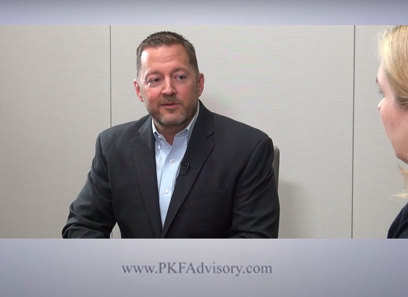M&A Outlook: Exploring the Growing Importance of Emerging Market Opportunities
M&A Outlook: Exploring the Growing Importance of Emerging Market Opportunities
Blog Article
The Influence of Mergers and Acquisitions on Market Dynamics and Competition
The landscape of acquisitions and mergers offers a complex interplay in between cultivating growth and potentially threatening affordable stability within markets. As firms pursue tactical placements to boost efficiency and innovation, the ramifications on consumer selection and market prices warrant mindful scrutiny. While the benefits of such consolidations can be apparent, the darker ramifications usually arise, raising vital inquiries about market power and the regulative structures designed to maintain balance. This discussion invites an exploration of the nuances involved, disclosing how these corporate maneuvers reshape the very foundations of competition.
Overview of Mergers and Acquisitions
Mergers and procurements (M&A) play a pivotal duty fit the landscape of contemporary service, as business seek to boost their affordable edge and attain critical purposes. M&A deals involve the debt consolidation of business or assets via different financial purchases, consisting of mergers, where 2 firms combine to create a new entity, and acquisitions, where one firm purchases another outright. These tasks are driven by a myriad of aspects, such as the quest of harmonies, diversification of product offerings, and the need to enter brand-new markets.
The M&A process generally entails numerous stages, consisting of tactical preparation, due diligence, arrangement, and combination (Emerging Market Opportunities). Companies carry out comprehensive analyses to identify prospective targets that align with their development strategies and examine the operational and monetary implications of a purchase. Regulatory factors to consider also play a critical role, as antitrust regulations are designed to stop monopolistic techniques that could damage competition
As organizations browse the complexities of M&A, the results can dramatically impact stakeholders, including investors, workers, and customers. Comprehending the dynamics of M&A is necessary for evaluating their ramifications within the wider context of market actions and affordable placing.
Favorable Results on Market Characteristics
The combination of companies with procurements and mergings can bring about substantial favorable results on market characteristics. Among the key advantages is the enhancement of operational efficiencies. By combining resources, companies can simplify procedures, lower redundancies, and attain economic situations of range, eventually improving and lowering prices productivity. This performance can convert right into lower costs for customers, promoting a more open market setting.

Moreover, enhanced market share resulting from mergers can provide companies with better negotiating power with distributors and providers, helping with improved terms and problems that can profit the general supply chain.
Negative Consequences for Competitors

In addition, the removal of competitors through purchases can stifle advancement. When principals merge, smaller firms might struggle to complete, leading to a homogenization of services and products. The resultant lack of competition can create an environment where continuing to be business have less incentive to invest in r & d.
Additionally, mergers can develop barriers to entry for brand-new companies, as the merged entity may utilize its boosted resources to dominate the market. This can hinder possible entrants, thereby restricting competitors and development in the long term.
Inevitably, while procurements and mergings can use tactical benefits, their prospective to undermine competitors necessitates mindful factor to consider of their broader effects on the market characteristics. The equilibrium in between growth and affordable integrity continues to be a vital concern in reviewing such business approaches.
Regulative Factors To Consider and Oversight
Regulative frameworks play a crucial function in shaping the landscape of purchases and mergings, guaranteeing that market characteristics remain reasonable and affordable. These frameworks are created to stop anti-competitive habits and to shield consumer passions. Regulatory bodies, such as the Federal Trade Payment (FTC) in the USA and the European Commission in the EU, examine recommended mergings and acquisitions based on their possible influence on competition within the marketplace.
The analysis procedure involves a complete examination of the market share, potential for monopolistic methods, and the total financial implications of the transaction. Regulators commonly enforce problems or require divestitures to reduce worries over minimized competitors, guaranteeing that the merged entity does not dominate the marketplace unjustly.
Additionally, openness is a vital part of governing oversight. Stakeholder engagement, including public have a peek here consultations, allows for diverse perspectives to be thought about in the decision-making procedure. This collective technique assists to promote a balanced regulatory environment that advertises innovation while safeguarding affordable techniques. Inevitably, reliable governing factors to consider are necessary in preserving market stability and encouraging healthy and balanced competitors when faced with progressing company landscapes.
Study and Real-World Examples
Regularly, instance research studies of notable mergings and acquisitions highlight the profound effects these deals can have on market characteristics. The 2000 merger in between AOL and Time Warner functions as an archetype, where the expected synergies dropped short, leading to an extreme decline in investor value. This instance underscores just how look what i found cultural misalignments and overestimation of market potential can interrupt competition.
On the other hand, the acquisition of WhatsApp by Facebook in 2014 exemplifies an effective integration that improved the communication landscape. Emerging Market Opportunities. Facebook leveraged WhatsApp's individual base to boost its service offerings, successfully enhancing its market prominence while maintaining competitors in the messaging field
Another substantial case is the merger of Exxon and Mobil in 1999, which produced among the world's largest oil firms. This combination brought about better efficiencies however elevated concerns regarding minimized competitors in the power market, prompting regulative examination.
These instances highlight the complicated interaction in between purchases and mergings and market characteristics, showcasing both the prospective benefits and mistakes that can develop, eventually shaping competitive landscapes across markets.
Final Thought
Mergers and purchases Related Site play a pivotal duty in shaping market characteristics and competitors. Reliable regulative oversight is important to ensure that the advantages of M&An activities are maximized while alleviating negative influences on market competition.
One significant issue is the possibility for minimized market competition, as mergings usually lead to the loan consolidation of market power among less players. Governing bodies, such as the Federal Trade Compensation (FTC) in the United States and the European Commission in the EU, examine proposed mergers and procurements based on their potential influence on competition within the market.

Mergers and acquisitions play a crucial function in shaping market characteristics and competitors. Effective governing oversight is necessary to guarantee that the benefits of M&A tasks are taken full advantage of while reducing adverse effects on market competition.
Report this page